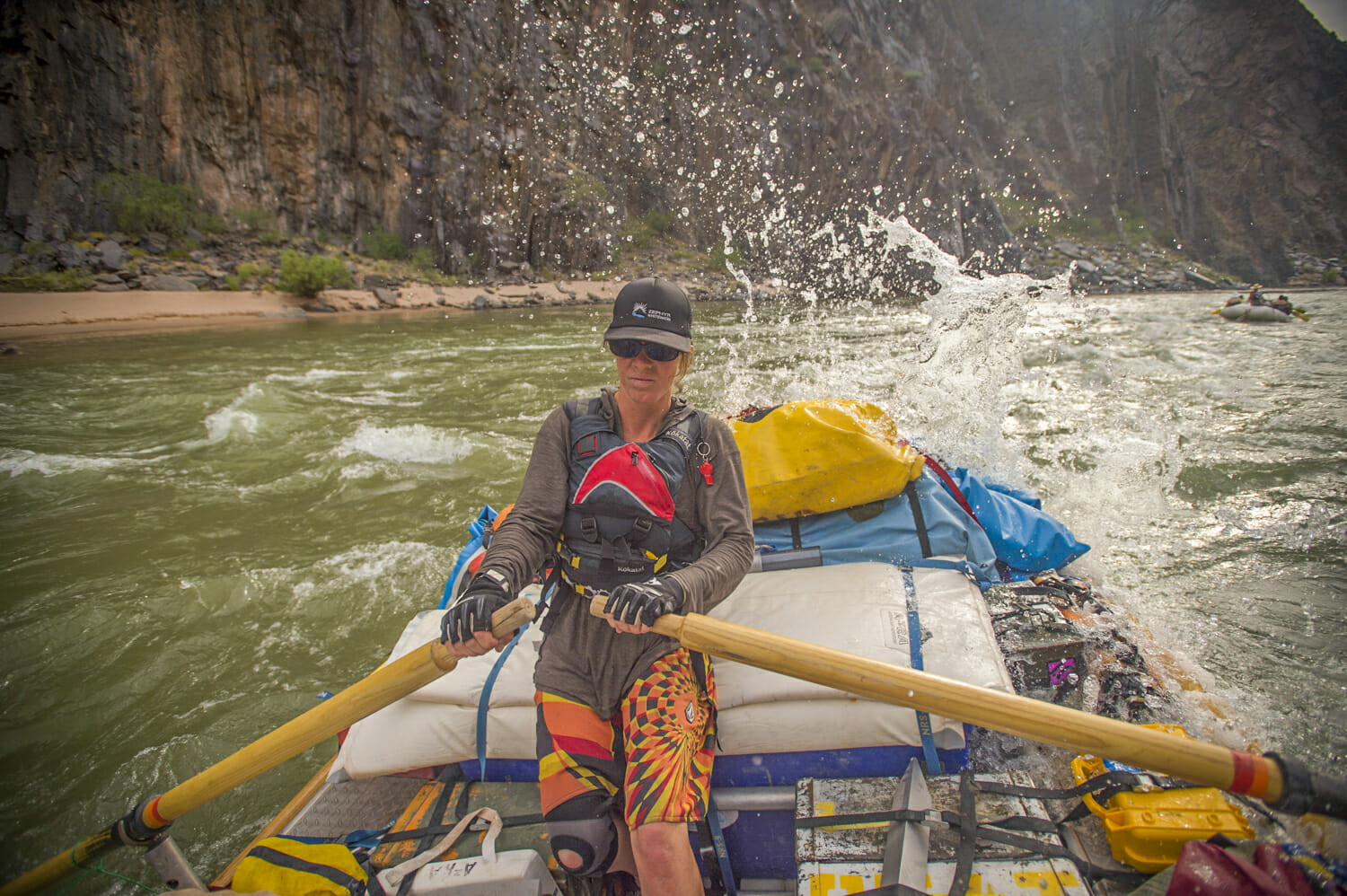Earlier this week I rambled on about river etiquette and how not to be a jerk on the river. Since this little editorial space is so new, we might as well get some housekeeping out of the way and talk about one of the most important aspects when on the water besides etiquette. How to fish from a boat while being safe.
Safety will be something we come back to every so often, taking deep dives on specific situations and hopefully sharing a few ideas that will resonate. We’re definitely open to suggestions too, so please feel free to share. This topic is complex, sometimes controversial and isn’t concrete. Below, I thought I’d list just a few basics specifically to help jog the memory as you head back out on the water and get after your favorite fish.
Rowing in moving water safely—and in a way that maximizes your fishing success—isn’t necissarily instinctual to most new boat owners. It certainly wasn’t for me. There’s a learning curve you must get through in order for the mechanics to become second-nature. The only way to really become an expert on the sticks is with lots of practice. But if you’re a rookie on the oars, these are four critical tips to know before that maiden voyage.
Move in Reverse
You always have better control and steering ability when moving backward. In fact, in the vast majority of situations, you’ll want to get to where you’re going by pointing the stern—not the bow—at your desired destination, and then pulling the oars and rowing upstream. It may seem counterintuitive, but forward rowing leads to trouble. Rowing backward reduces the amount of forward momentum the current can impart on the boat, slowing you down and giving you more time to think. This is especially critical in heavier water with obstacles present. Always remember that if there’s something you don’t want to hit, point the bow directly at it, row backward, and hopefully you’ll miss it.
Always remember that if there’s something you don’t want to hit, point the bow directly at it, row backward, and hopefully you’ll miss it.
Don’t Get Sideways
Never let the boat get completely perpendicular to the current. This is something new rowers struggle with because it’s easy to lose focus or drop the oars just long enough that you get spun sideways to the flow. Drifting at a right angle, however, is the fastest route to disaster. A river flowing at even a couple of miles per hour is incredibly strong, and all it takes is a small rock just below the surface or grazing a canyon wall to flip or sink a boat. Even in water flowing barely 3 miles per hour, I’ve seen rafts flipped, cotter pins sheered, oars snapped in half, teeth lost and people thrown into the water. Unless you need to take swift, evasive action to avoid trouble, keep the bow of the boat pointing downstream at all times.
Keep Your Distance
Maintain a set distance from the bank. That distance, of course, will be determined by your target species and how you’re fishing, but once that’s established, keeping a uniform distance from the bank or any target structures gives anglers the best opportunity to be effective. If the boat is constantly moving 30 feet out, then 10 feet back, then 20 feet out again, it forces the casters to constantly compensate, which is especially painful for fly anglers because they’ll have to strip out or take in more running line to keep up with the fluctuations. As the rower, it’s your job to always be looking ahead at the bank contour so you can make adjustments to maintain that ideal distance.
Communicate Often
A good rower has the ability to adapt to the skill levels of the anglers. If the bow angler can cast like a champ, but the stern angler is spending most of the day untangling line from around their feet, you’re going to have to make adjustments throughout the day. As an example, when coming up on some prime water, you might want to angle the stern toward the bank, shortening the casting distance for the less skilled angler in the rear. While this might put your front angler at a slight disadvantage, his or her skills should let him cover the extra distance. Check in with the anglers often. Ask them if they need to be closer to or farther from the bank. And ask them if they need you to adjust the boat’s speed.
For far more details on safety while in rivers specifically check out American Whitewater’s Safety Code of American Whitewater.



